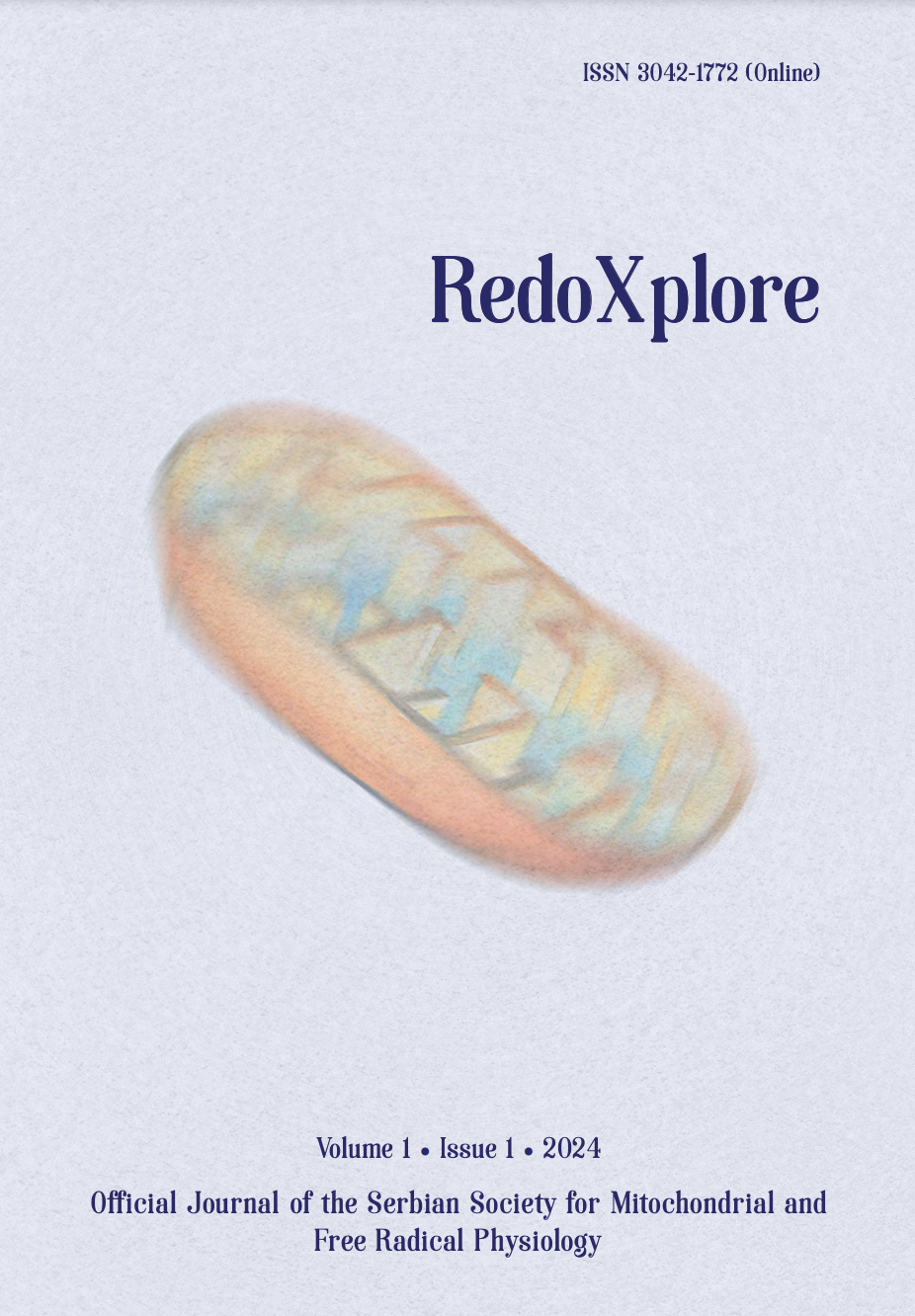
More articles from Volume 1, Issue 1, 2024
REDOX AND METABOLIC REPROGRAMMING OF BREAST CANCER CELLS AND ASSOCIATED ADIPOSE TISSUE - THE CORNERSTONES OF ADAPTIVE TUMOUR BEHAVIOUR
INSULIN MODULATES MITOCHONDRIAL STRUCTURAL AND FUNCTIONAL MOSAICISM IN BROWN ADIPOCYTES
NITRITE MITIGATES OXIDATIVE BURST IN ISCHEMIA/REPERFUSION IN BRAIN SLICES
NITRIC OXIDE, SUPEROXIDE AND PEROXYNITRITE – REDOX REGULATION OF THE CARDIOVASCULAR SYSTEM BY NITRO-OXIDATIVE STRESS AND S-NITROS(YL)ATION
DIETARY NITRATE AS PIVOT ON THE GUT MICROBIOTA-HOST REDOX COMMUNICATION
OXYGEN, SULFUR, SELENIUM AND LIPID PEROXIDATION: HOW GPx4 CONTROLS LIFE AND DEATH
Professor Emeritus of Biochemistry, University of Padua , Padova , Italy
Editor: Bato Korac
Published: 29.08.2024.
Plenary lectures
Volume 1, Issue 1 (2024)
Abstract
The selenoperoxidase GPx4, discovered in 1982, plays a pivotal role in preventing ferroptosis. In a moonlighting function, GPx4, in its mitochondrial and nuclear forms, also contributes to spermatogenesis. The critical advantage of Selenium vs. Sulfur catalysis is the stability of the oxidized form of the chalcogen in the catalytic cycle. While the mechanisms of catalytic cycle are understood, its regulation remains largely unknown. Existing evidence supports the notion that ferroptosis is activated when GPx4 is inhibited, glutathione (GSH) concentration is lowered, or the labile iron pool is expanded. The outcome is framed in the context of oxygen toxicity playing the physiological function of controlling cell death. GPx4 stands out as the sole peroxidase indispensable to aerobic life. Moreover, a recent study exploring the role of the residue Arg152 in GPx4, linked to a fatal although not embryonically lethal disease, revealed that the wild-type enzyme exhibits surface-sensing and positive cooperativity in the presence of cardiolipin. This adds complexity to the mechanism of physiological function encompassing the interaction with acidic phospholipids in mitochondrial membranes. Ferroptosis is implicated in both physio-pathological conditions, including embryogenesis, cancer suppression, neurodegenerations, inflammatory disorders, metabolic syndrome, heart and kidney diseases. No antioxidant enzymatic system can substitute for GPx4 in inhibiting ferroptosis, emphasizing the vital role of selenium. Phenolic antioxidants, which reduce lipid hydroperoxyl radicals, can only inhibit lipid peroxidation under physiological conditions, and thus ferroptosis, when the lipid hydroperoxides formed are immediately reduced by GPx4. In contrast, the ferroptosis inhibitor Ferrostatin-1 (Fer-1) proves to be significantly more efficient than phenolic antioxidants. Analytical and computational evidence supports the notion of a pseudo-catalytic cycle where the ferrostatin-iron complex, both produces and reduces lipid alkoxyl radicals from lipid hydroperoxides. This discloses the roadmap for the identification of innovative antioxidants competent for preventing ferroptosis.
Citation
Copyright

This work is licensed under a Creative Commons Attribution-NonCommercial-ShareAlike 4.0 International License.
Article metrics
The statements, opinions and data contained in the journal are solely those of the individual authors and contributors and not of the publisher and the editor(s). We stay neutral with regard to jurisdictional claims in published maps and institutional affiliations.






